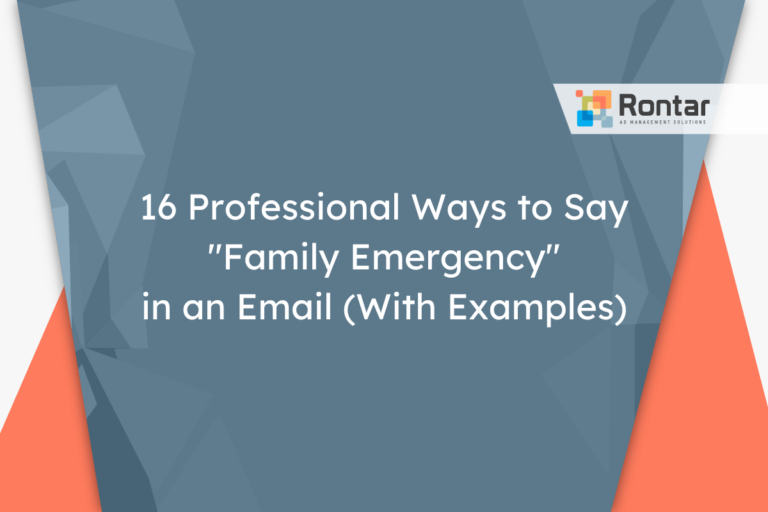10 Professional Ways to Say “I Understand”

The phrase “I understand” is common, but using the same words repeatedly can become dull and uninspired.
This article introduces ten alternative phrases that convey understanding in a professional yet refreshing way. Each alternative is explored in detail to help you choose the right one for different situations and recipients.
Is It Formal to Say “I Understand”?
The phrase “I understand” can be professional, formal or informal, and polite depending on how it’s used. You can use this phrase in professional settings to show you grasp what someone is saying or to acknowledge a point. It works well in emails, meetings, and direct messages.
Email example:
Dear Emily,
Thank you for sending over the details of the project timeline. I understand the importance of sticking to these dates and will ensure my team is on track.
Best regards,
Lucas
Let’s look at the pros and cons of using “I understand” in communication.
Pros:
- Shows empathy and comprehension.
- Keeps the conversation professional.
- Can be used in both formal and informal settings.
Cons:
- May seem repetitive if overused.
- Could be perceived as dismissive without additional context or follow-up.
Sometimes, you might want to use an alternative phrase to “I understand” to vary your language or to better match the tone of a conversation.
10 Other Ways to Say “I Understand”
Here are ten professional alternatives to saying “I understand” that can be used in workplace emails:
- I see your point.
- That makes sense.
- Understood.
- I get what you’re saying.
- That’s clear, thank you.
- I comprehend the situation.
- Point taken.
- Message received.
- I grasp the concept.
- Acknowledged.
1. I see your point
This alternative is slightly more informal than the original phrase but maintains a professional tone. It implies not just understanding but also agreement or at least acknowledgment of the other person’s perspective. This phrase is great for emails and meetings where you want to show you value someone’s input and viewpoint.
This alternative works well with colleagues or clients you have a good working relationship with. It’s best used in emails or during conversations where there’s a need to affirm you understand the other person’s stance without fully committing to your agreement.
Example:
Dear Mark,
Thank you for your detailed proposal. I see your point on the projected timelines and agree that adjusting our approach might be necessary.
Best,
Sophia
2. That makes sense
This phrase is polite and professional while being straightforward. It’s an excellent way to acknowledge that you’ve understood the logical or practical aspects of what was shared. It doesn’t necessarily imply agreement but shows that the argument or information presented is reasonable.
Useful in emails and meetings where clarity is achieved, or in contexts where you’re being briefed and want to reassure the speaker that their message is clear. It suits communications with both superiors and peers, especially in discussions that involve solving problems or strategizing.
Example:
Dear Lila,
I've reviewed the document you sent over. That makes sense, and I believe we're on the right track with our strategy.
Regards,
Tom
3. Understood
This one-word alternative is formal and to the point. “Understood” conveys a clear message of comprehension without unnecessary elaboration. It’s efficient for confirming understanding in a professional setting, making it perfect for email communication as well as verbal confirmations.
Ideal for quick responses where you need to show you’ve received and comprehended the information without needing further explanation. It’s particularly appropriate in more formal emails or messages to higher-ups or clients, ensuring you maintain a concise and professional tone.
Example:
Dear James,
Understood. I will proceed with the adjustments as discussed.
Best wishes,
Nina
4. I get what you’re saying
This option is slightly more informal but still entirely acceptable in a professional context. It implies a good level of understanding and personal engagement with the discussion. This phrase is a good choice when you want to show you are actively listening and processing the information shared.
This is best used in more relaxed professional environments, such as creative fields or with colleagues you have a friendly rapport with. It’s suitable for emails, video calls, or in-person conversations where the tone can be a bit more casual yet respectful.
Example:
Hi Trevor,
I’ve looked into the issue you raised. I get what you're saying, and I think your suggestion might just be the solution we need.
Cheers,
Elena
5. That’s clear, thank you
This alternative is polite and ensures the recipient feels their message has been fully understood and appreciated. It adds a note of gratitude, making it a great choice for fostering a positive interaction. The phrase is professional while also being warm.
This is suited for communications where you want to acknowledge the effort someone has put into explaining something to you, or when clarity has been achieved after a complex discussion. It works well in emails, especially with colleagues or clients after a detailed explanation has been provided.
Example:
Hi Carol,
That’s clear, thank you for explaining the new procedure. I appreciate your help.
Best,
Tom
6. I comprehend the situation
This is a more formal and explicit way of expressing understanding. It clearly states that not only do you understand the information, but you also grasp the implications or context of the situation. This choice is particularly professional and thorough.
Great for use in situations where you need to convey that you have a deep understanding of a complex issue, such as in reports or detailed email exchanges with superiors or specialized departments. It shows a high level of engagement with the subject matter.
Example:
Dear Clara,
I comprehend the situation and the challenges it presents. Let's discuss our next steps tomorrow.
Kind regards,
Victor
7. Point taken
This alternative is succinct and professional, indicating that you have not only understood but have also taken into consideration what has been said. It’s an effective way to move conversations forward, especially in negotiations or discussions involving feedback.
This phrase is well-suited for interactions where you want to acknowledge someone’s input or criticism constructively. It’s perfect for emails or meetings where decisions are being made, indicating that you value and consider the contributions of others.
Example:
Dear Jerome,
Point taken. I’ll ensure those adjustments are made before the next phase begins.
Regards,
Fiona
8. Message received
This is a straightforward and formal synonym for acknowledging receipt and understanding of a message. While it’s quite direct, it’s also unequivocally professional, perfect for confirming that you’ve received specific instructions or important information.
It’s especially suitable for quick email replies, direct messaging within professional platforms, or when confirming receipt of directives from superiors. It ensures clarity in communication, letting the sender know their message has been seen and understood.
Example:
Dear Benjamin,
Message received. I’ll start working on this immediately.
Best,
Olivia
9. I grasp the concept
This alternative conveys a deep level of understanding and is formal yet insightful. It indicates not just a surface-level comprehension but also an appreciation of the underlying ideas or concepts being discussed. It’s a professional, considerate way to respond.
Best for conversations or emails where complex ideas or strategies are being explained. This phrase is applicable in settings where analytical thinking and comprehension are being demonstrated, such as in project planning, strategy meetings, or academic discussions among professionals.
Example:
Dear Zoe,
Regarding the new marketing strategy, I grasp the concept and am excited to see how we can implement it.
Kind regards,
Liam
10. Acknowledged
“Acknowledged” is a brief, formal synonym for “I understand” that communicates clear receipt and recognition of information without indicating agreement or disagreement. It’s very professional and is commonly used in written communications to confirm understanding.
This alternative is most effective in email correspondence or written memos where brevity is essential, such as during the exchange of instructions or when confirming the receipt of policies or procedures. It’s particularly useful in hierarchical or structured professional environments.
Example:
Dear Wyatt,
Acknowledged. The documents have been received and are currently under review.
Sincerely,
Megan
Final Thoughts
Choosing the right way to say “I understand” in professional emails can greatly impact how your message is received. The alternatives provided aim to offer a mix of formal and polite options that suit various workplace scenarios. By varying your language, you demonstrate thoughtful communication and engagement with others’ ideas.






